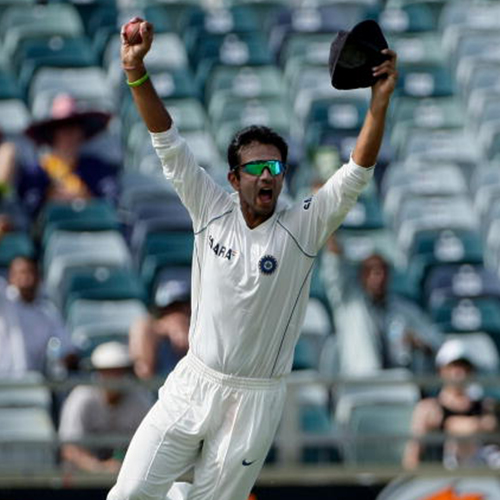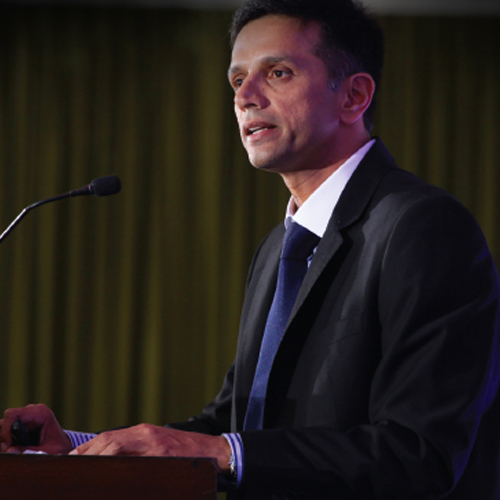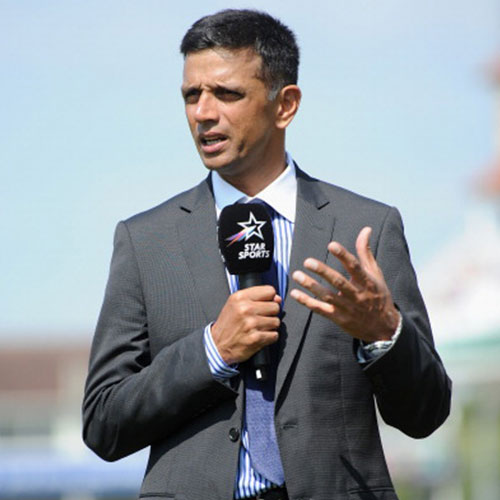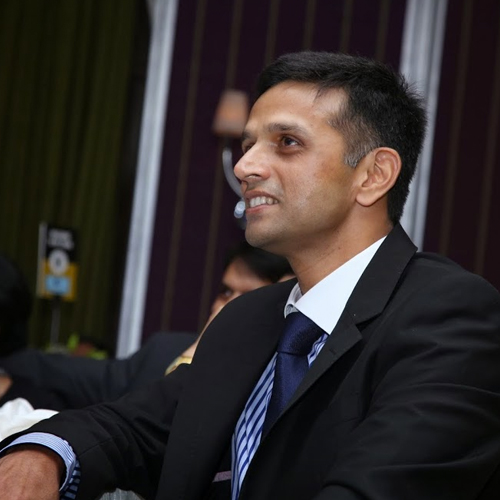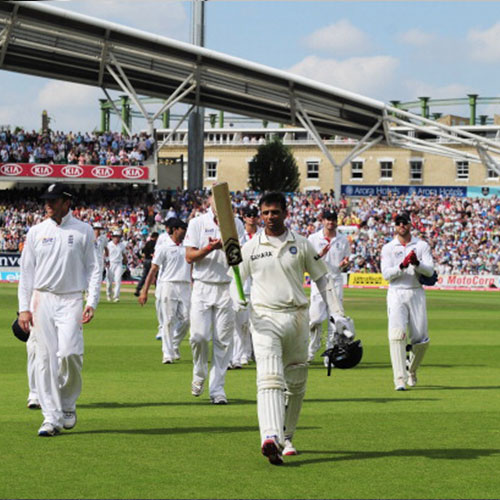India International Centre
Sports Speech – January 20, 2015
Good evening Ladies and Gentlemen. I am excited to be back in New Delhi among you all. The cold nip in the air is more than made up for by the very warm welcome I have received.
My immediately previous public effort in this beautiful city was in my last competitive cricket match – the final of the CLT20 in 2013. My innings that night was shortlived, with my ugly slog completely missing the ball on its journey towards rearranging my stumps. I promise to put up a better show tonight.
With that out of the way, I would like to start with telling you a story.
This story begins in Islampur, a small village in Sangli district in Maharashtra, with an apparently friendly wrestling match between the pampered son of a village headman and a 12 year old boy. Stunningly, the 12 year old wins and his reward is death threats from the villagers who treat this as an insult to their headman. This forces the 12 year old to flee the village straight from the wrestling ring, hopping onto a goods truck with nothing but his winning purse, the then princely sum of Rs 12. Without his parents’ knowledge, he is now in Pune and joins the Indian army where he takes up boxing and plays competitively, being seen as a rising sports star in the army. A few years down the line, he requests a posting in Kashmir and soon after he is part of a regiment staving off enemy fire. He is hit by 7 bullets in the 1965 war, being hit on the skull, spine, cheek and thighs and then having a jeep run over him to add to it all. He also loses his memory and forgets his own name. One day, he falls off his hospital bed and hits his head on the floor. This helps him regain his memory. It is only 6 years later that his family traces him and come to visit. Seeing his condition, they refuse to take him back, seeing him as an unmanageable burden. This turn of events motivates the young man to come up with a fancy plan to kill himself. As he lies in wait to execute his plan, he plays a game with his hospital attendant and wins Rs. 40,000. This causes a change of heart. He checks himself out of hospital, and takes up competitive sport again. Vijay Merchant hears his story, sponsors his training and Murlikant Petkar goes on to win swimming gold for India at the 1972 Paralympic Games in Heidelberg, Germany, breaking the world record of the time. This was India’s first Paralympic gold medal! He had also participated in 3 other events at the Games, including the javelin throw, making the finals in all, having also represented the country in table tennis.
When I first read this story in the book Courage Beyond Compare by Sanjay and Medini Sharma, I could barely comprehend that journey. I promise you, I didn’t make it up.
Murlikant Petkar’s story is truly unique and without parallel. The journeys and stories of each of our nation’s sporting achievers fascinate me. I am humbled when I realize the obstacles and challenges that need to be overcome. The context to the achievement cannot be forgotten either. All this is happening in an environment that may not always understand how to be supportive or why it is important to encourage athletic achievement. The athletes’ journeys, battles and victories may be their own. But to see this phenomenon as just their individual journeys loses an opportunity. An opportunity to build a legacy of sport in our country.
This is a subject I am deeply passionate about, and I would like to share my thoughts with you all today.
As a 10 year old, I remember being overwhelmed with emotions when Kapil Dev ran back to catch Viv Richards in the 1983 World Cup final. When he lifted the World Cup I was overjoyed, in part because I could feel something change within me, and in equal measure I felt this came as just reward to my father who had invested so much emotion and time into this game he loved. So on the one hand it kicked off a new journey, mine, and was an important part of another, my father’s.
It might have been all too much for a 10 year old to comprehend then, but knowing what I do now, I sometimes wonder what went through the heads of those 11 men in the lunch break as they went out to defend 183 in 60 overs against Clive Lloyd’s mighty West Indians? Were they perhaps, somewhere in the back of their minds, empowered with the knowledge that India with her 8 Olympic hockey medals was capable of winning on the world stage? I would like to think the deeds of Dhyan Chand and those who followed him contributed in some way to the belief that victory was possible.
A couple of decades later, there came a young boy from a small town. He achieved, he over achieved. He won everything there was. He made the country proud. On the way, he put his small town on the world map. Today, if people in Australia and West Indies know about Ranchi, I think it has a lot to do with MS Dhoni. Ranchi’s economy has grown at a rapid pace. The other day, I was reading a research report and was amazed to find an economic phenomenon called “The Dhoni Effect”. It is very different from the “Dravid Effect” which is cited when anyone scores at less than a run a ball these days. Rajgopal of Ernst & Young says, about this:
“The Dhoni Effect identifies a phenomenon where rapidly growing small towns of India are taking center stage. This research highlights the growing affluence levels, increased awareness due to media penetration, improved physical connectivity, and significant changes in consumption patterns with high aspiration levels of small-town India that are compelling marketers to take notice.”
Today, there are more youngsters from small towns dreaming and aspiring for great things in different walks of life. To me this is a journey started by the Dhyan Chand’s and the many hockey players that gave us a sporting heritage to be proud of, it was kept alive by our Kapil Dev’s and their outrageous aspirations and brought to their full potential by MS Dhoni.
I must also tell you the story from my days playing U-19 cricket for India. I love sharing this one so some of you might have heard it before and I apologise for the repetition. We had two bowlers in the U-19 India team. One a fast bowler from Uttar Pradesh – he spoke only Hindi. The other bowler a spinner from Kerala who spoke only Malayalam. Neither of them knew any other language. That was ok while they were bowling – as captain I used a lot of head nodding, sign language and my limited Hindi to set their fields. But I will never forget the one game, they happened to come together at the crease while we were batting. In the dressing room, we were in splits, wondering how they were going to manage the business of a partnership, calling for runs or sharing the strike. Neither man could understand a word of what the other was saying and yet they batted and batted and put on a 100-run partnership for the last wicket. All the opposition sledging literally went over their heads and they just had a good time speaking the common language of sport, partnerships and the aspiration to do well together.
Isn’t it amazing that sport can have such an impact on our nation and its people? When we see sporting magic happen it is exhilarating, it is inspiring and it must motivate us to use the full potential of sport in our nation building exercise.
Around 2008, I was in the middle of a lean patch. The runs had dried up and I was on the wrong side of 30. That isn’t good territory in Indian cricket. I needed to pick myself up. I wanted to. I knew I had at least another couple of years of cricket left in me. Around this time, I watched, with glee as, Abhinav Bindra shot his way to an Olympic Gold in Beijing. I still remember the adrenalin rush that I felt at the time. Watching that Indian flag go up and listening to the national anthem moved me. Reading Abhinav’s autobiography was fascinating for me. I think his story must be read by anyone on the quest for excellence. His obsession for perfection stood out. He did absolutely everything in his power to seek perfection. No compromises, no shortcuts! He had a good team around him who could match his obsession. They made sure everything was perfect. Even small things like shaving a millimeter off the sole of one of his shoes to achieve the right stance. It had to be perfect. It was! Abhinav could have easily sat back and enjoyed being good at his sport, but he was able to push himself to be great. He found and took all the support he could get to learn about his art and give it his best shot. Abhinav’s achievement emboldened me to give it that last push with my own career, to dig deep again and do whatever it took, as difficult as it might seem.
His ‘no shortcuts’, ‘no excuses’ approach is something we can all aspire for, in whatever tasks, big or small, that we undertake. The patchwork solutions, the temporary fixes, the cut corners, the jugaad we are so proud of in our work and our relationships may well get the job done. But does this approach truly make us feel alive, or for that matter allow us to live to our full potential and push the boundaries of our capabilities?
If I had a daughter, I would tell her the story of MC Mary Kom. I have two young sons and as they grow up they will hear her story from me too.
Every time I think of Mary, I am astounded by the way she has defied so many odds to go on and be an Olympic medalist. In her journey, I believe she has broken down so many barriers for young Indian girls, or for that matter, anyone fighting the odds. Mary, Sania Mirza and Saina Nehwal have redefined what this generation’s girls and their parents think about sport. They no doubt stand on the shoulders of the PT Usha’s and MD Valsamma’s who fought the early battles. As each of them breaks down these barriers, the next generation is watching eagerly.
Last year, with GoSports Foundation, I started working closely with a few of our country’s junior athletes who aspire to achieve at the Olympics and Paralympics. I work with them on their goals and approaches and the team also grants scholarships to talented athletes. One of the young men I have had the pleasure of interacting with is Para-Swimmer Sharath Gayakwad. I was very impressed with his poise and confidence and how he carried himself. I learnt a lot from our interactions. When he went on to win six medals at the Asian Para Games last year, the most medals won by an Indian athlete at a multi-sport event, it brought me so much joy. I was proud to see him do so well and happy that he was rewarded for his hard work. I am sure Murlikant Petkar was following Sharath and smiling quietly, too.
You may ask why I tell these stories of these athletes. To me these are more than stories, these are dots that are beginning to join to create a larger picture. We have among us many of these people I have mentioned and many others like Leander Paes, Prakash Padukone, Geet Sethi, Gopichand, Vishy Anand, Sushil Kumar, Pankaj Advani, to name only a few, who are changing the narrative of Indian sport. Some are still playing and others are giving back in different capacities. Their achievements are no longer anecdotal and there are more and more people joining them in support every day. The government is also slowly but surely waking up to the potential of sport.
I have grown up in an environment when the dominant narrative of Indian sporting achievement was “We Can’t”. These achievers have fought hard, built on each other’s body of work and knowledge and have today changed the script to “We Can”. They have eaten away at practically every stereotype or excuse one can think of. It is a gift we have been given and the “We Can” now needs to feed into an “I Can” attitude for every Indian who has the aptitude and desire to insert the fabric of sport into their lives. Whether urban or rural, boy or girl, wealthy or not, able bodied or not, regardless of region, caste or religion. Talent is agnostic. And aspiration is free.
Just how do we go about delivering the value and joy of “Sport for all”? I cannot say I have all the answers but I do have a 5-point wish list to get us started.
First, we must continue to support our elite athletes and their journeys. This must be done wholeheartedly and not grudgingly, with a full understanding of the value they bring to us as fellow Indians. Let us be more positive, generous and give credit where it is due. I have recently become part of the Target Olympic Podium Scheme helping the Ministry of Youth Affairs and Sports to identify and support our best medal prospects. The pipeline of talent is exciting and each of us can play a role in their success. Ultimately, we all benefit with their progress.
Second, while elite sport sets the standard, it cannot be the be all and end all of sports policy and development. The net needs to be widened and systems need to be put in place so the benefits of these elite achievements can be captured and delivered to all. In my view, while the government continues to support the elite talent, the attention of our sporting federations must be shifted to establishing junior sports systems and facilitating community sport through more accessible public facilities, equipment, coaching and competitions that anyone with an interest can access, sample and adopt. Sport is a public good and there is no reason at all for it to be a privilege of the elite. Federations must relinquish the garb of control, encourage sports entrepreneurship and expand the impact and reach of sports for all.
Third, we need to bring together and integrate the concepts of sports and education. At one end, children must sample sports of different sorts in every school in the country either as part of their syllabus or after school programmes. It is a universal language and a wonderful teacher. At the other end, both elite and community sports require a talented and educated set of facilitators, coaches, support staff, administrators. The time is right to also focus on building the human resources that will build and grow our system. As much as we have seen the impact of the IIT’s, IIM’s and other institutions, sports education must be prioritised through upgrading and building the institutions of sports learning and operating them at world class levels. This will also give sustainable second career opportunities to athletes whose career are short and risky. All in all this could be a game-changer if executed well.
Fourth, we must focus our programmes on women’s participation in sport. Today, we have 270 million girls under 25, comprising 20% of our population. They hold the key to our country’s future. They will undoubtedly make up a significant portion of our future leaders, influencers, doctors, teachers and mothers, among other things. They will help shape what India looks like and what being Indian means. Can we give them the best possible chance of bringing sport into their lives? Can we remove the various barriers that stand in the way of our girls playing sport, continuing to play, and achieving sporting success? A deeper understanding of these barriers, be that of safety, perception, bias or otherwise need to be understood with sensitivity and addressed with aggression.
Finally, our sporting universe will not be complete if we do not focus equal attention on those participating in Paralympic or Special Olympic disciplines either at the elite or competitive levels. Every Indian truly deserves a chance to enjoy the thrill of sporting achievement, regardless of inherent limitations or differences. I would like the Paralympic and Special Olympics movements to receive special attention from the government to give them the impetus they richly deserve. I am sure there will be many well-wishers to any programme that is well structured and accountable in this regard.
I would be incredibly happy if these issues were addressed in a national sports policy and active steps were taken by all stakeholders in projects that would raise the water level on all these fronts.
Before concluding, I would like to share a small story that sort of sums up the way I feel.
A couple of months ago, Kidambi Srikanth, a young badminton player we have been supporting through GoSports Foundation for some years, went on to beat the legendary Lin Dan in his own den at the China Open to win that tournament. The only other Indian to have beaten Dan was Srikanth’s coach Pullela Gopichand. The achievement was truly exceptional, but I would like to read an excerpt of an email received a few days later from a well wisher. It read: “Recently I happened to watch your boy Srikanth Kidambi beating Lin Dan. He played with a cool head and showed real international talent. His victory was simply a great achievement […]. Thank you for giving a reason to stand tall in an immigration queue with an Indian passport especially when travelling Far East. God bless.”
We are over 1.2 billion Indians, not all may have passports. Not all may have to stand in immigration queues. But every Indian deserves the chance to fully enjoy sport and sporting achievement.
Like I said, the dots are many, they are connecting and the picture is growing in size and sophistication. In my view, we are well equipped as people to achieve at sport. We are determined, we are talented, we make do with whatever we have got, we pick ourselves up and fight again. We are proud to be Indian. Let us think back to Murlikant Petkar. If he can, we can and if we can, you and I can.
I believe that we have what it takes to become a great sporting nation. We must now go out, make it happen and live that destiny. I will do my bit and hope each of you will too.
Thank you and Jai Hind.

